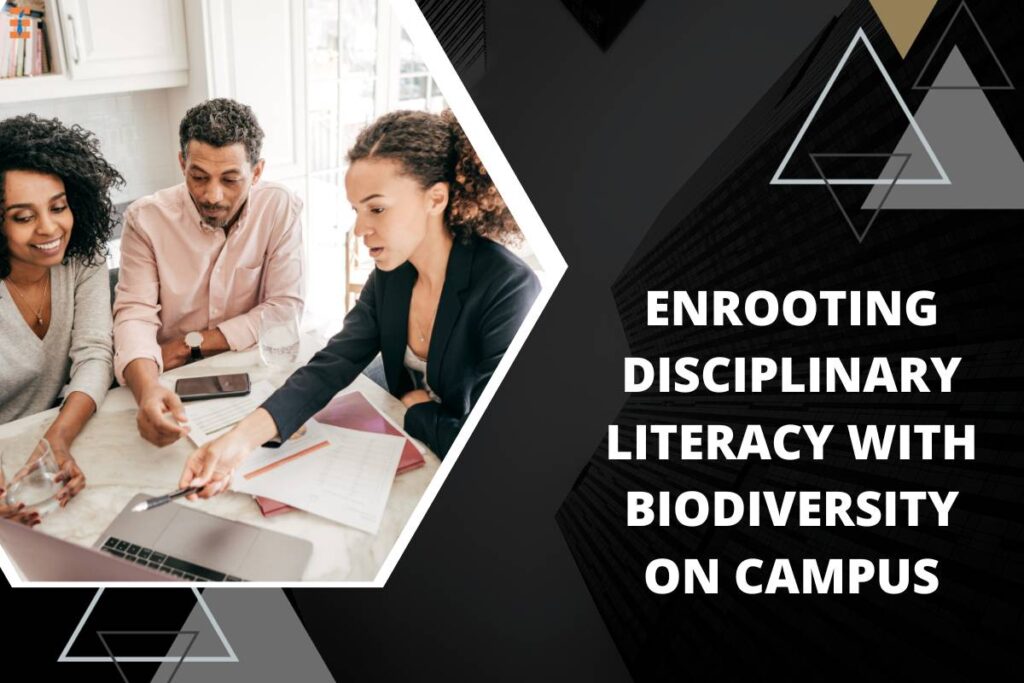Navigating through the ever-expanding landscape of education, I’ve come to appreciate the significance of fostering disciplinary literacy as a cornerstone for cultivating well-rounded and informed individuals. One innovative approach that has truly captured my attention is the integration of biodiversity studies within our campus environment. Embarking on this journey, I’m eager to explore how delving into the rich tapestry of biodiversity on campus can serve as a powerful catalyst for developing disciplinary literacy. It’s not just about learning; it’s about offering students, including myself, a unique and immersive educational experience that goes beyond the confines of traditional classrooms.
Understanding Disciplinary Literacy
Disciplinary literacy goes beyond the conventional skills of reading and writing; it involves the ability to comprehend, analyze, and communicate effectively within a specific field of study. By incorporating real-world applications and context-specific content, students develop the critical thinking skills necessary for success in various disciplines.
Enrooting Disciplinary Literacy through Exploring Biodiversity on Campus:
1. Biodiversity on Campus: A Living Classroom

Campuses, often considered microcosms of ecosystems, provide an ideal setting for integrating biodiversity into the curriculum. From the lush greenery to the smallest organisms thriving in the soil, every corner of the campus holds potential lessons for students to explore. This living classroom becomes a canvas for interdisciplinary learning, weaving together elements of biology, ecology, environmental science, and more.
2. Observational Learning: A Window to Biodiversity
Encouraging students to engage in observational learning opens a window to the intricate world of biodiversity. From identifying plant species to understanding the behaviors of local fauna, students can hone their observational skills. This firsthand experience instills a sense of curiosity and appreciation for the natural world, laying the foundation for disciplined inquiry.
3. Experiential Learning: Bridging Theory and Practice
The concept of biodiversity isn’t confined to textbooks; it’s a living, breathing entity waiting to be explored. Experiential learning, through guided field trips and hands-on projects, bridges the gap between theoretical knowledge and practical application. Students can actively participate in ecological surveys, document species diversity, and contribute to ongoing biodiversity research initiatives.
4. Multidisciplinary Connections: Weaving a Holistic Narrative
Biodiversity transcends disciplinary boundaries. By exploring the myriad connections within ecosystems, students gain insights into the interdependence of living organisms. The intricate dance between plants, animals, microorganisms, and their environment provides a holistic narrative that spans biology, chemistry, geography, and beyond.
5. Developing Scientific Literacy: Analyzing Data and Drawing Conclusions

As students delve into biodiversity studies, they are exposed to vast datasets and research findings. This immersion in scientific literature allows them to develop scientific literacy – the ability to critically analyze data, interpret graphs, and draw informed conclusions. These skills are transferable across disciplines, nurturing a broader understanding of the scientific method.
6. Environmental Stewardship: Fostering a Sense of Responsibility
An essential aspect of disciplinary literacy is instilling a sense of responsibility towards the environment. Biodiversity studies on campus create environmentally conscious citizens. Understanding the impact of human activities on local ecosystems empowers students to become advocates for sustainability and environmental stewardship.
7. Collaboration and Communication: Sharing Biodiversity Insights
Effective communication is a fundamental component of disciplinary literacy. Biodiversity projects encourage collaboration among students, fostering teamwork and communication skills. From presenting findings to creating awareness campaigns, students learn to articulate their insights and engage with diverse audiences.
8. Adapting to Technological Advances: Integrating Digital Literacy
In the digital age, literacy extends beyond traditional forms. Exploring biodiversity on campus can seamlessly integrate digital literacy. Students can utilize technology for data collection, analysis, and presentation. Platforms like virtual reality may even offer immersive experiences, further enriching the learning journey.
9. Challenges and Solutions: Nurturing Resilience

While integrating biodiversity into campus learning poses certain challenges, such as resource constraints and curriculum alignment, these challenges provide growth opportunities. Nurturing resilience becomes an inherent aspect of disciplinary literacy, preparing students to adapt to unforeseen challenges in their academic and professional journeys.
10. Future Prospects: Cultivating Lifelong Learners
The integration of biodiversity studies into campus education not only enhances disciplinary literacy but also nurtures a love for learning. By fostering curiosity, critical thinking, and a sense of responsibility, this approach cultivates lifelong learners equipped to navigate an ever-changing world.
Conclusion
In my quest for disciplinary literacy, the exploration of biodiversity on campus has unfolded as a truly transformative strategy. The vibrant tapestry of flora and fauna serves as a captivating canvas, allowing me to hone my observational skills, engage in experiential learning, and weave together a holistic understanding of the natural world that surrounds me. It’s more than just studying; it’s about immersing myself in an educational experience that transcends traditional boundaries.
Through these endeavors, I’ve discovered the profound impact of multidisciplinary connections, scientific literacy, and environmental stewardship. As a student, I’m not merely acquiring academic proficiency; I’m evolving into a conscientious global citizen. The integration of biodiversity on campus education is not just an academic pursuit; it’s a transformative journey towards creating informed, empathetic, and environmentally responsible leaders of tomorrow. It’s about embracing the role of a steward for our planet and contributing to a sustainable future.










